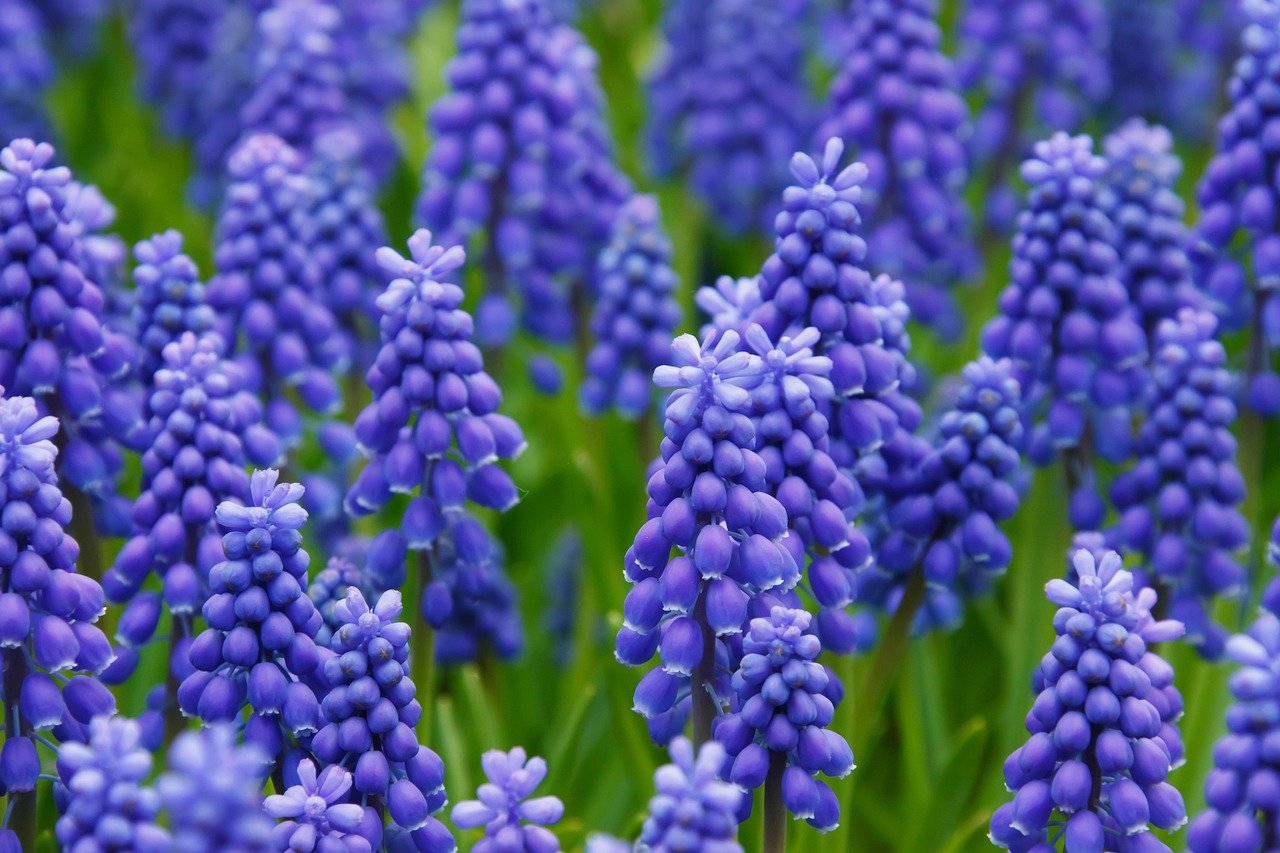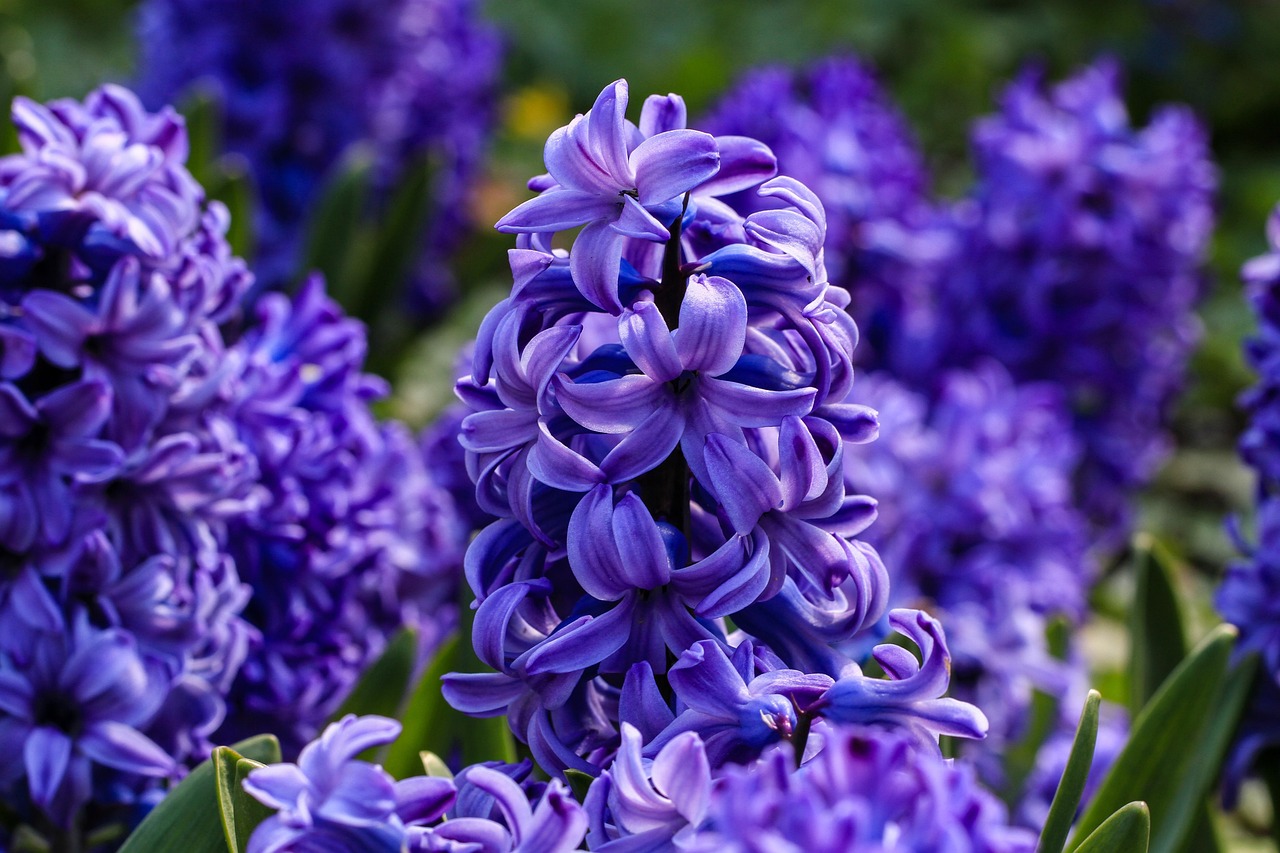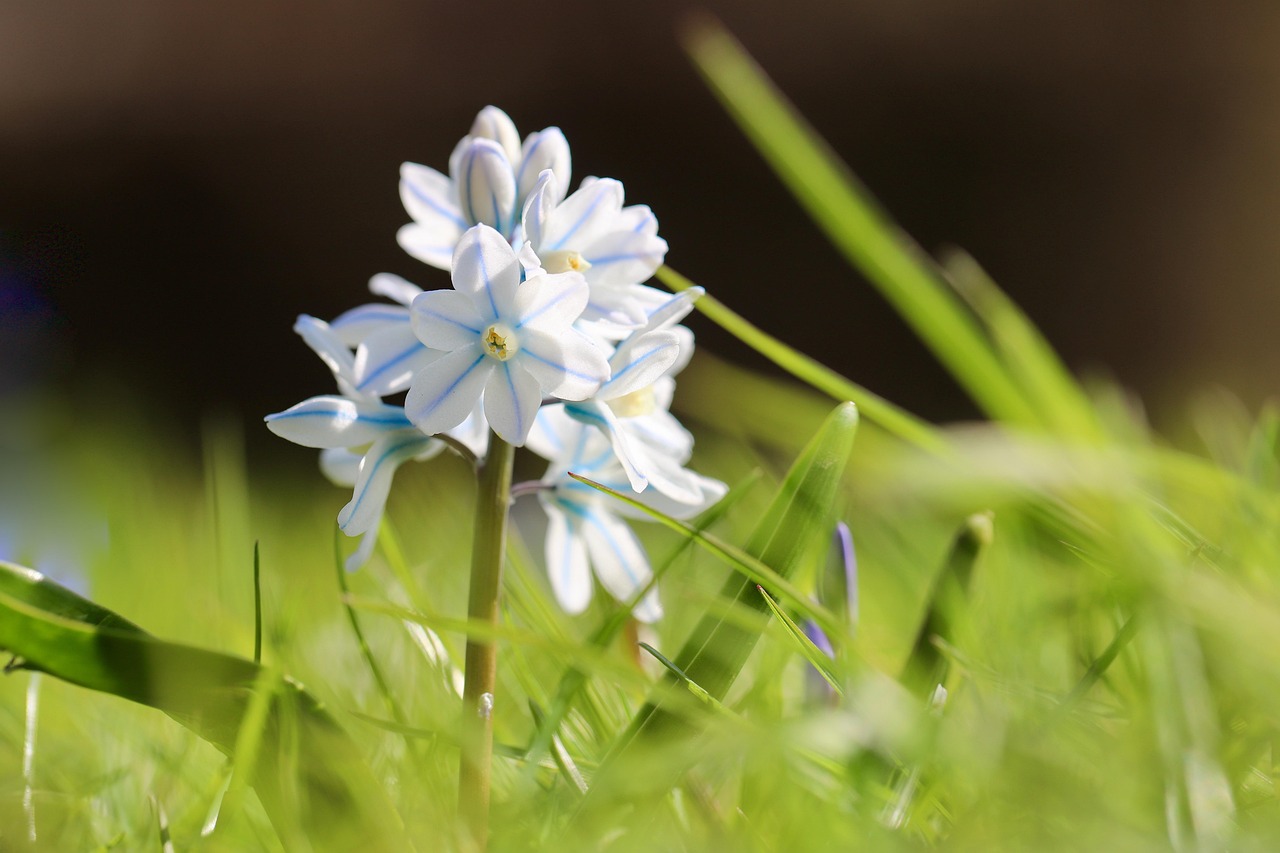Solomon’s Seal | A Subtle Beauty that Enriched Traditional Japanese Gardens
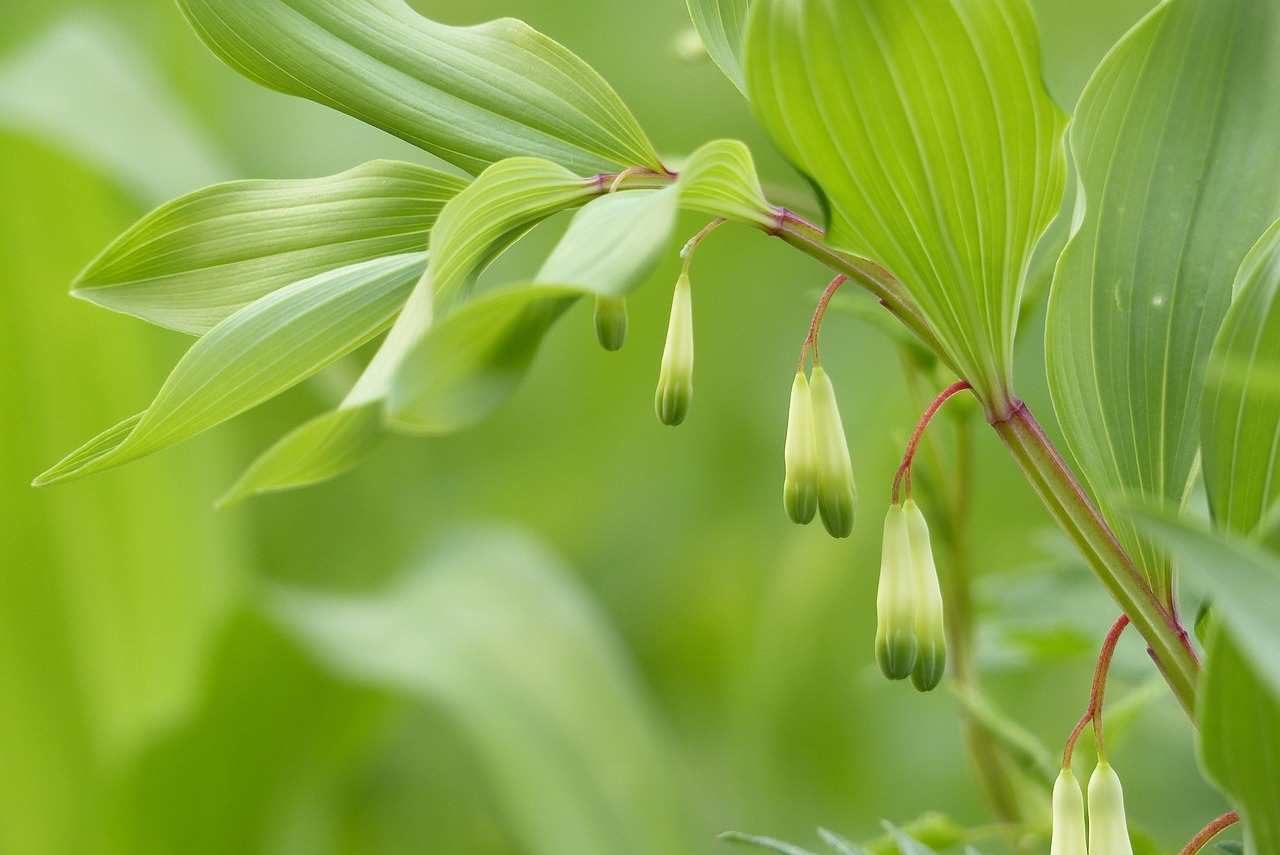
Solomon’s Seal, a perennial herb belonging to the Asparagaceae family, is native to East Asia, including Japan.
With its slender arching stems, delicate white bell-shaped flowers, and evenly arranged leaves, it embodies a quiet elegance that has long been admired in gardens, both Japanese and Western.
In this article, I will introduce not only the botanical characteristics of Solomon’s Seal but also its cultural and historical background, along with practical tips for cultivation.
Basic Information
- Scientific name: Polygonatum odoratum
- Family: Asparagaceae
- Origin: Japan, China, Korean Peninsula, Eastern Russia
- Appearance: Arching stems emerge from underground rhizomes, bearing alternating elliptical leaves. At the base of the leaves, small white bell-shaped flowers hang downward, creating a graceful, understated impression. When planted in groups, they form a soft, natural landscape.
- Blooming season: Spring (April–May)
Cultural Significance Worldwide
In Japan, Solomon’s Seal has been cherished since ancient times as a woodland plant, with its popularity growing during the Edo period when it was cultivated as bonsai and in pots.
It has been widely used in tea gardens and roji (garden paths), where subtle elegance is highly valued, serving as an essential plant in recreating natural landscapes. It has also symbolized concepts such as “mountain tranquility” and “the beauty of empty space,” making it one of the most iconic herbaceous plants in Japanese gardens.
In China and Korea, too, it has secured a place as a traditional garden plant. Its shade-loving nature makes it suitable for gardens emphasizing shadows, often planted alongside bamboo or stones to highlight the harmony between nature and human design.
In Europe, it was introduced into English gardens and woodland-style plantings in the 19th century.
In English country gardens and German naturalistic gardens, it is often combined with ferns and hostas, serving as a valued accent in semi-shaded areas and enhancing the undergrowth planting traditions of Europe.
Historical Background
In Japan, Solomon’s Seal appeared in written records from the Heian period onward, gradually gaining prominence as Japanese garden culture developed.
By the Edo period, when the appreciation of wild plants flourished, it became a beloved supporting plant, adding a touch of natural charm. In particular, temple gardens in Kyoto often incorporated it alongside moss and stepping stones to evoke seasonal atmosphere.
In Europe, it attracted attention during the 17th–18th centuries, an era of botanical classification, and was included in Linnaeus’s taxonomy.
The name “Solomon’s Seal” derives from the circular scars on its stem nodes, resembling wax seals, symbolizing “wisdom” and “secrets.”
By the 19th century, during the Victorian gardening era, it had become a staple of shade gardens, valued for its ability to highlight contrasts of light and shadow.
Gardening Advice
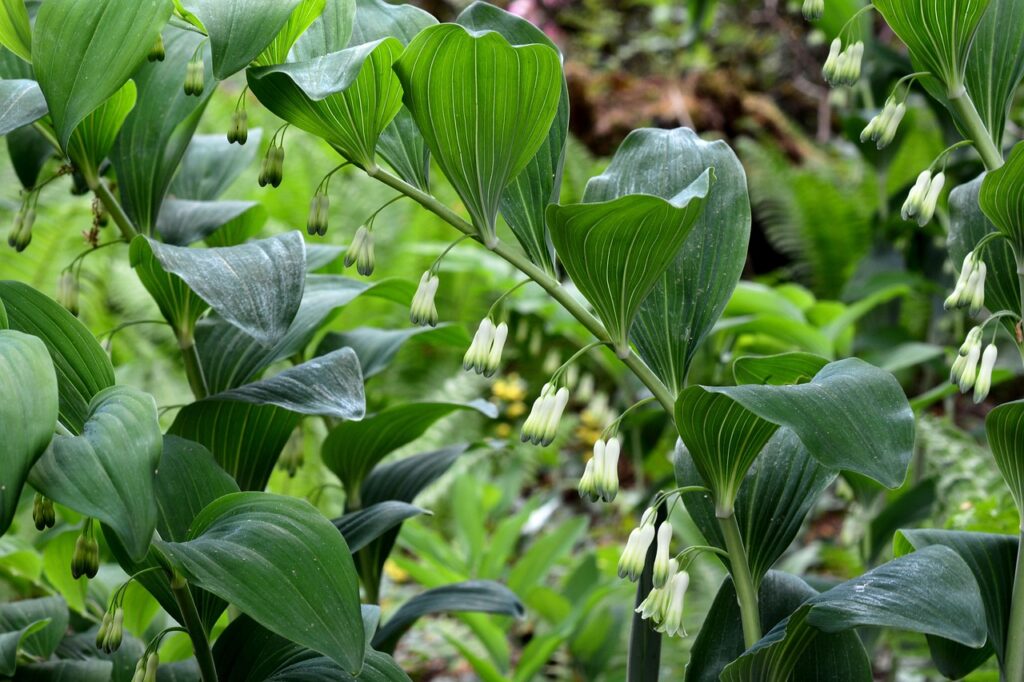
Solomon’s Seal is easy to care for and ideal for creating natural-looking landscapes. It grows best in semi-shaded areas and harmonizes beautifully with other plants.
Light
Thrives in semi-shade or bright shade, such as beneath trees or on the north side of buildings. Avoid strong direct sunlight, which may cause leaf scorch.
Watering
Water moderately when the soil surface begins to dry. Avoid excessive moisture while preventing prolonged drought. After the rainy season, water slightly more frequently.
Soil
Prefers soil rich in organic matter, with good drainage and moisture retention. Slightly moist soil is ideal.
Fertilization
Apply slow-release fertilizer in early spring to support healthy stems and flowers. Additional feeding is unnecessary.
Pruning & Care
After flowering, remove withered parts. The aboveground stems naturally die back in autumn, but new shoots will emerge in spring.
Wintering
Hardy enough to overwinter outdoors, even in colder regions. For potted plants, protect from freezing by placing them under eaves.
Repotting & Division
When clumps become crowded after several years, divide them in early spring or autumn to rejuvenate growth.
Conclusion
Solomon’s Seal, with its quiet grace and natural curves, is a perennial that has enriched garden cultures across Japan, China, and Europe.
It has played an important role in woodland and semi-shade plantings, symbolizing tranquility and elegance. Easy to care for and adaptable, it brings harmony and serenity to both Japanese- and Western-style gardens.

